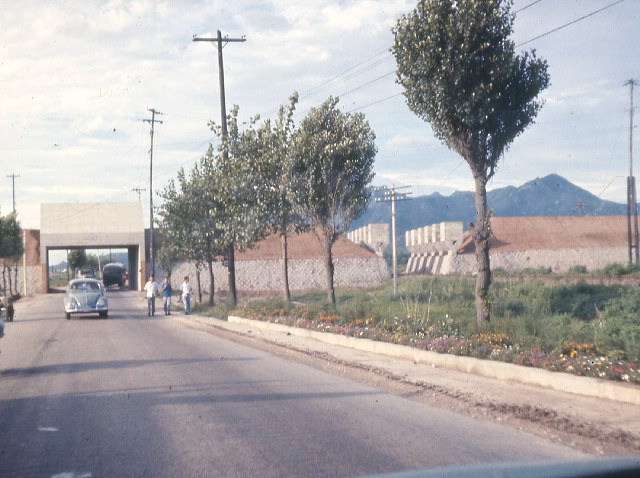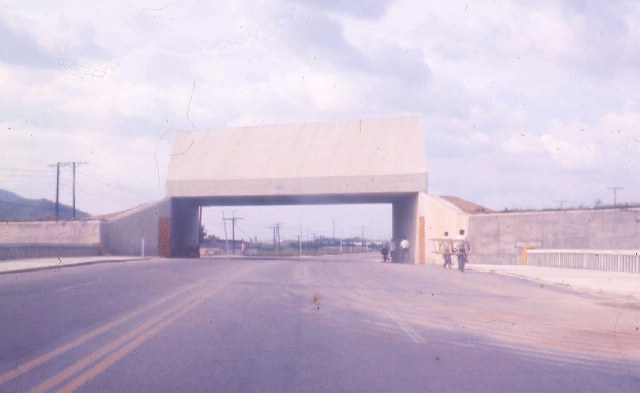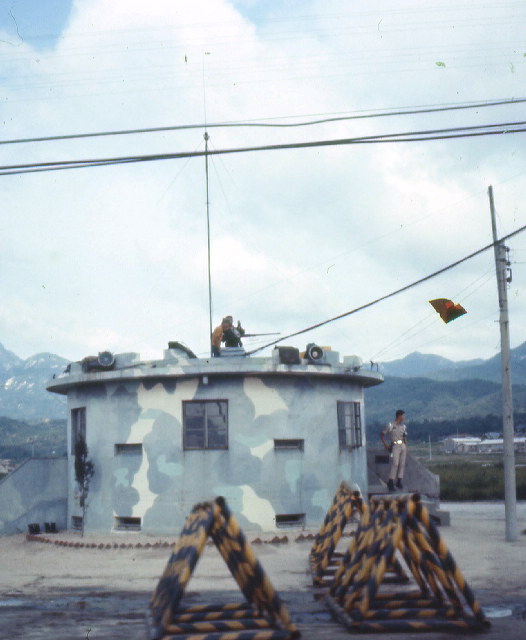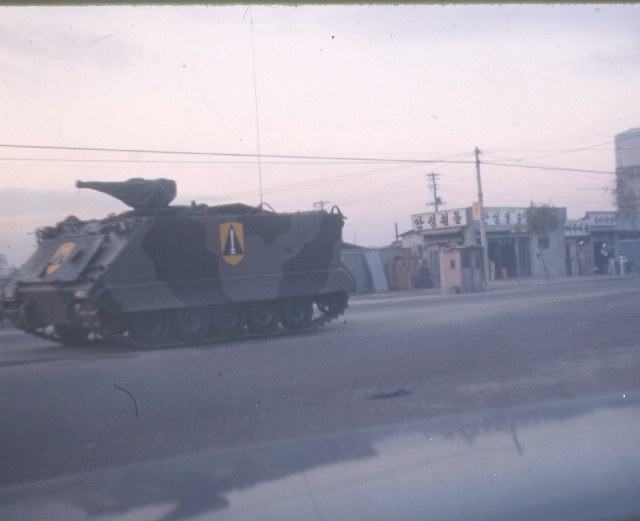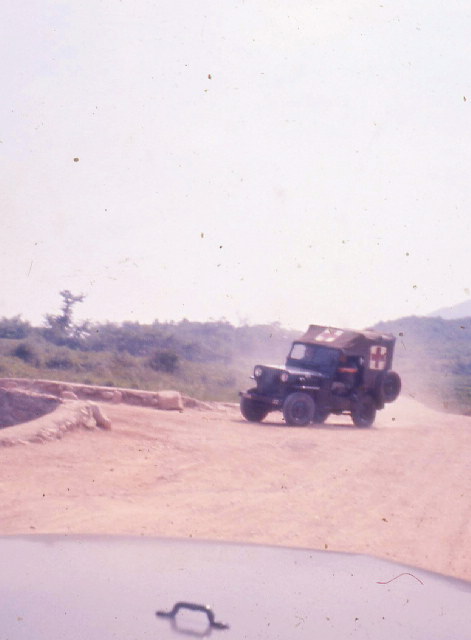|
Korea
- 1972 Korean Military and Politics
While I was there, the Koreans built east-west tank trap walls across the north-south valleys as a deterrent to North Korean invasion. In this pic, notice the massive concrete block above the road and, at the right, smaller structures above a railroad line. All had dynamite charges set in them so the gaps could be closed very quickly if needed. A bit disconcerting being stationed on the north side of these barriers.
A massive tank trap on a larger road.
This pill box with the machine-gun on top was at a checkpoint in the main north-south road. All vehicles heading south were stopped and searched, including busses (another way I often got from UiJongBu to Seoul). Did they think the North Koreans were going to invade by bus? At one time, a North Korean peace delegation was to come south by this road. Shortly before, the pillbox was painted blue and white with some sort of slogan about the benefits of health and education painted on it. A false sheet metal second story masked the gun emplacement.
Armored Personnel Carrier (APC) in a Seoul intersection during a period of Martial Law. All buttoned up for the night. (This was taken just after dawn as we commuted north towards Uijongbu.) There was a large element of theater in this. During the day, guards were placed at important buildings and tanks and APCs were set up in major intersections. But, leaving from Seoul for UiJongBu at 6 AM, just after the end of the nightly curfew, all the armored vehicles were closed up tight and nobody was on guard. They'd gone home for the night. See what I mean about it being for show? No need for tanks to be manned at night when no one was out to see them.
Korean front line ambulance. Yipes! |
